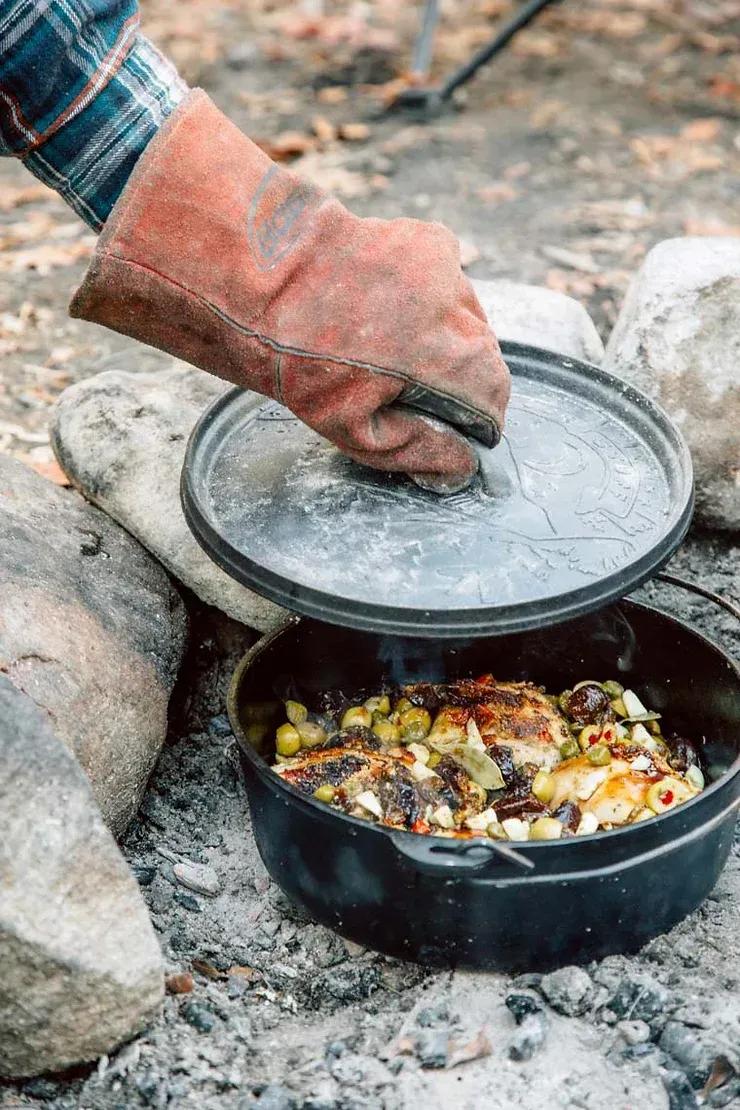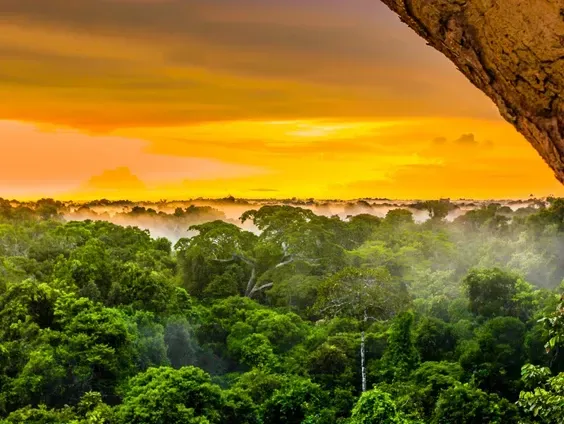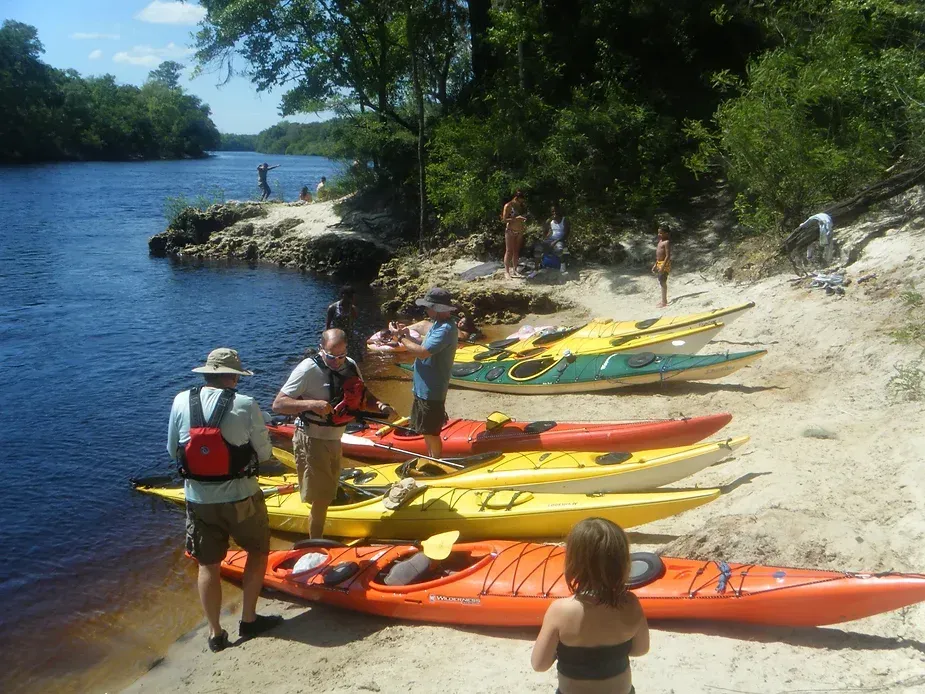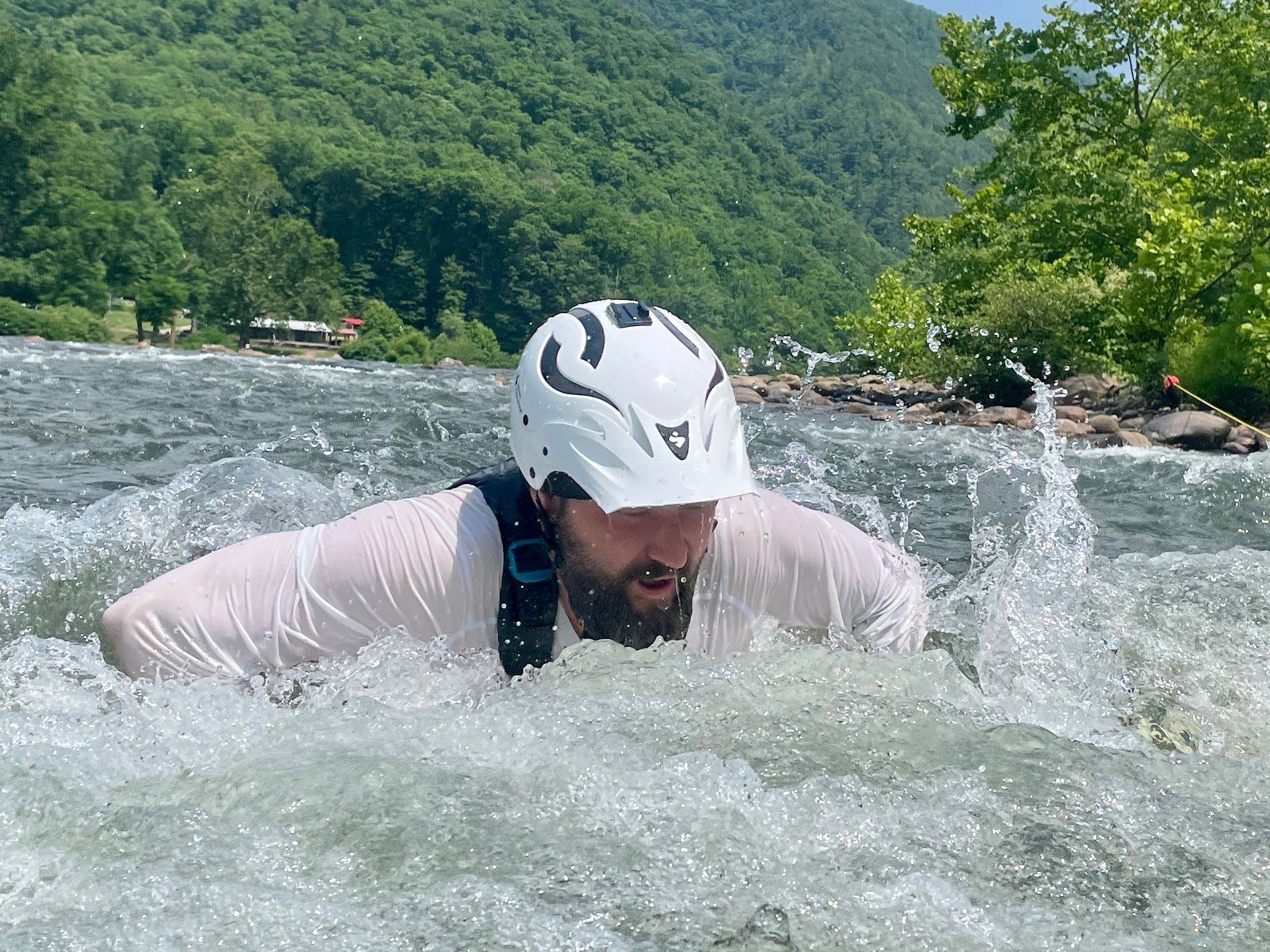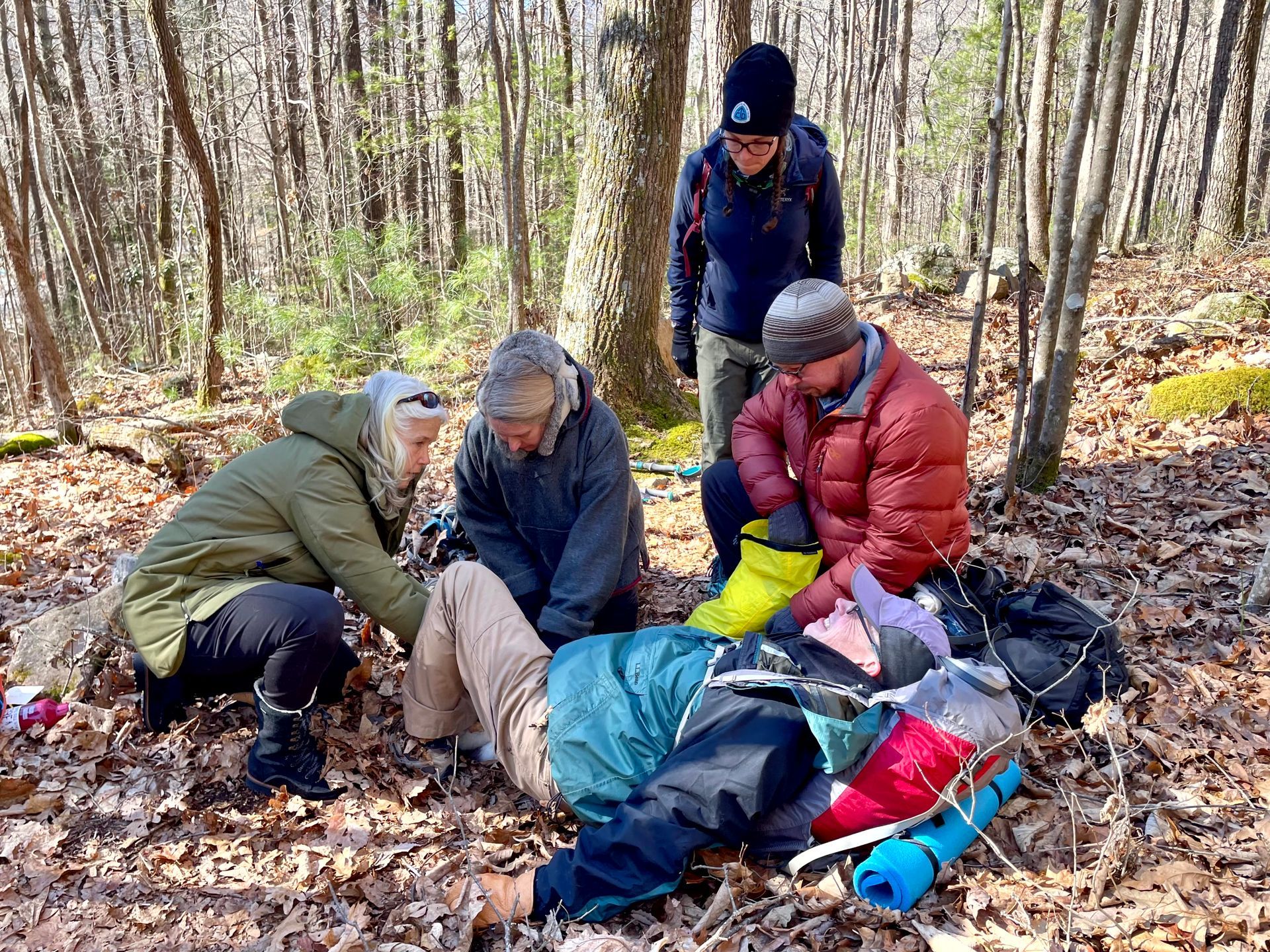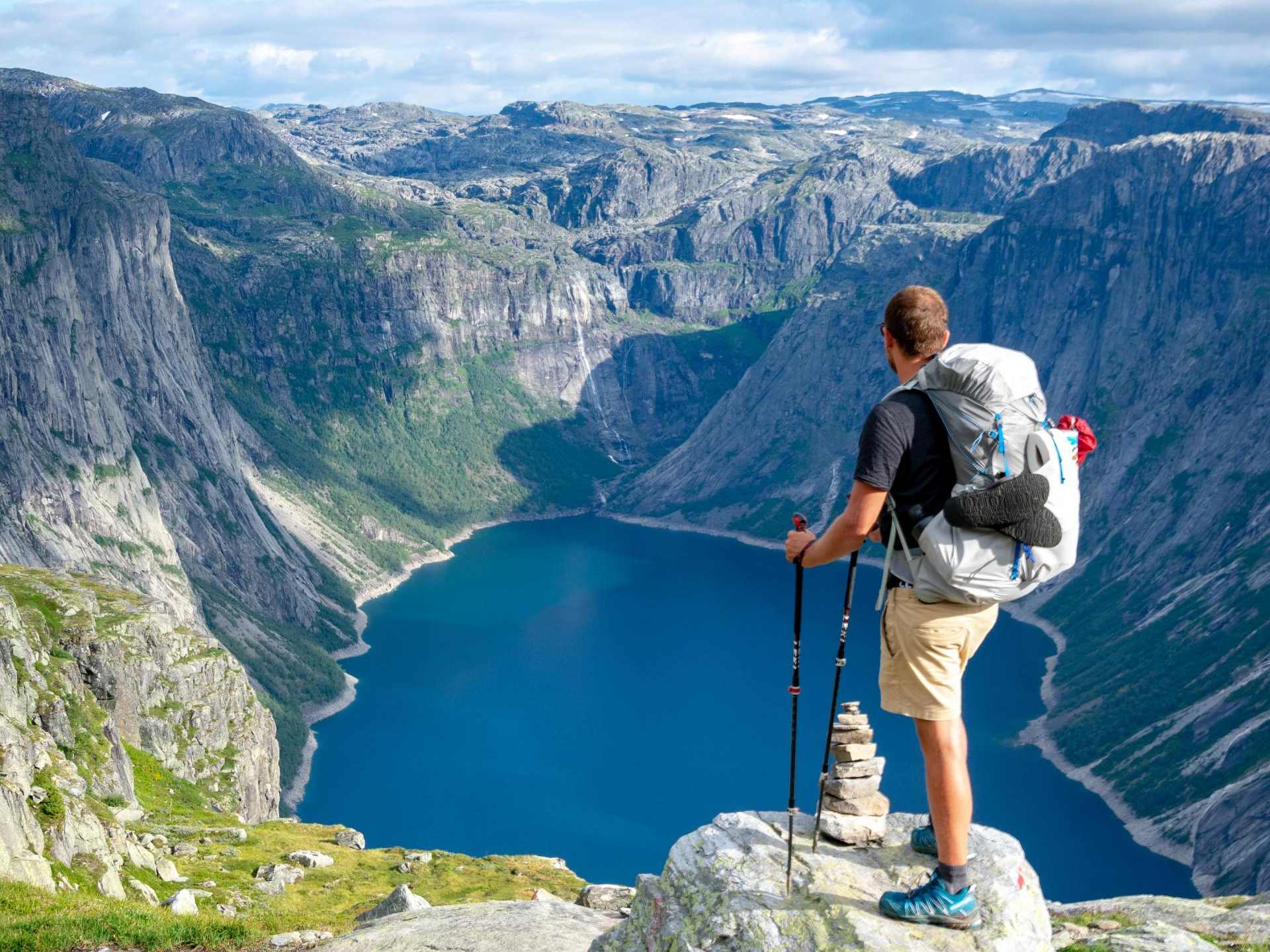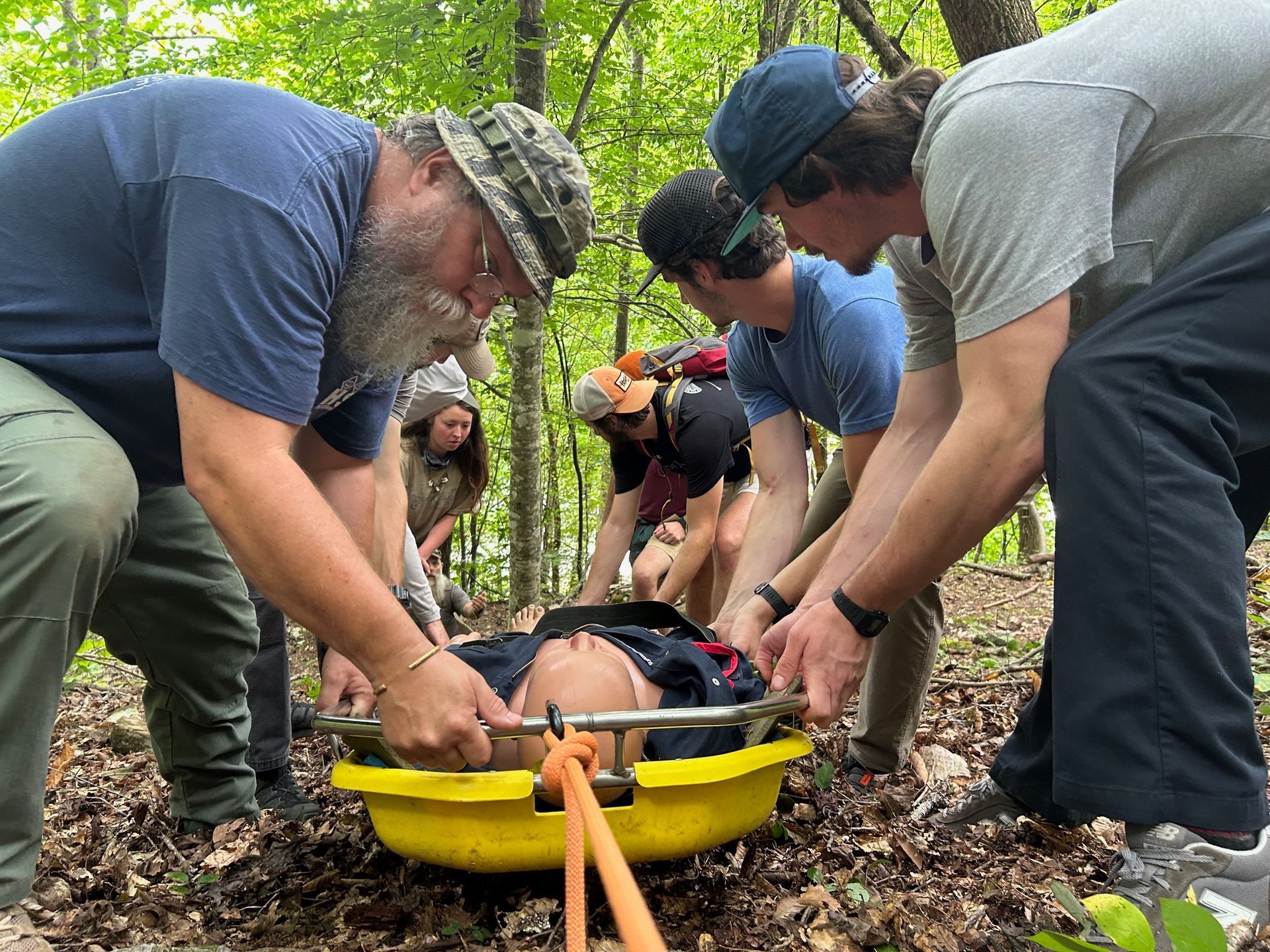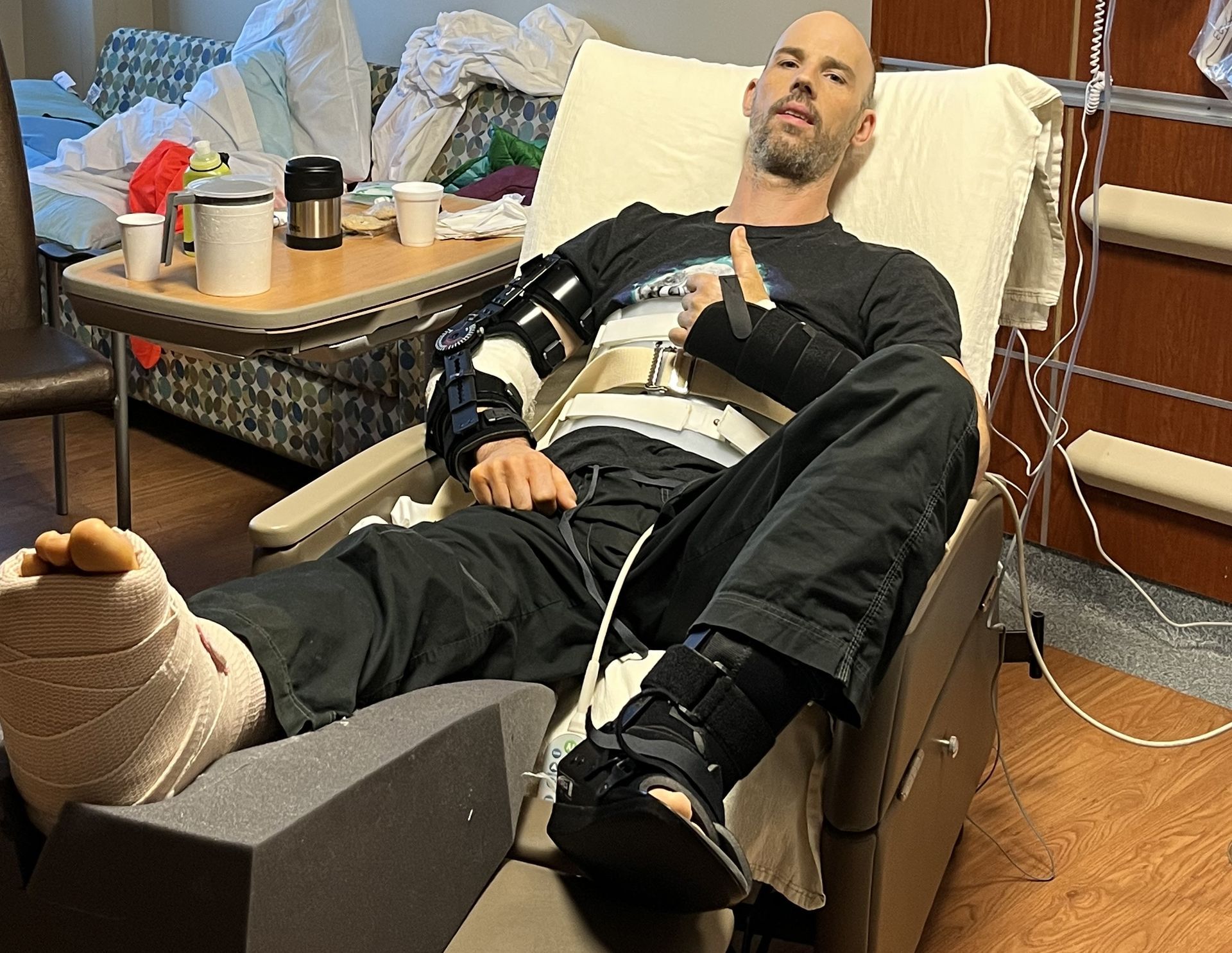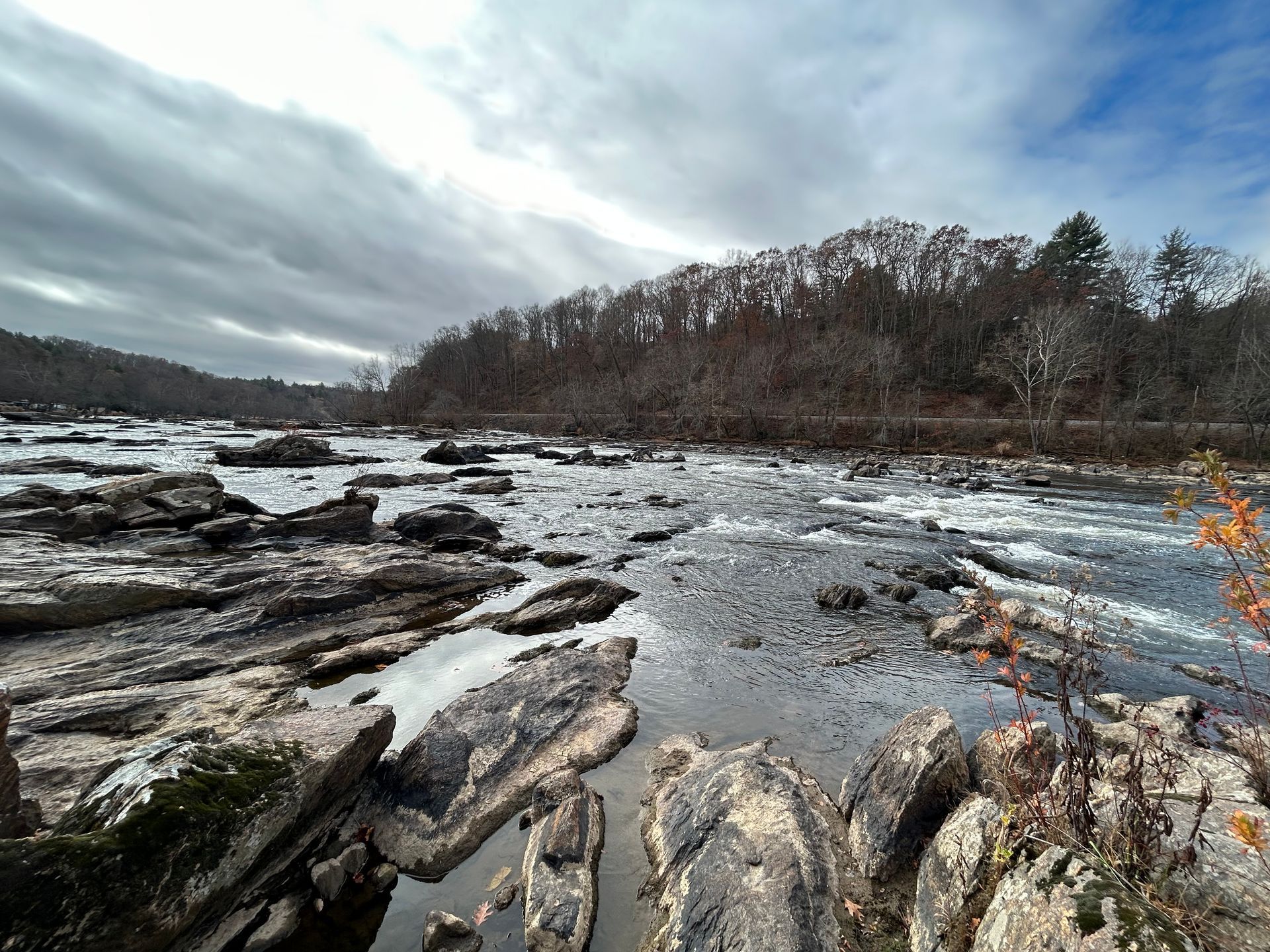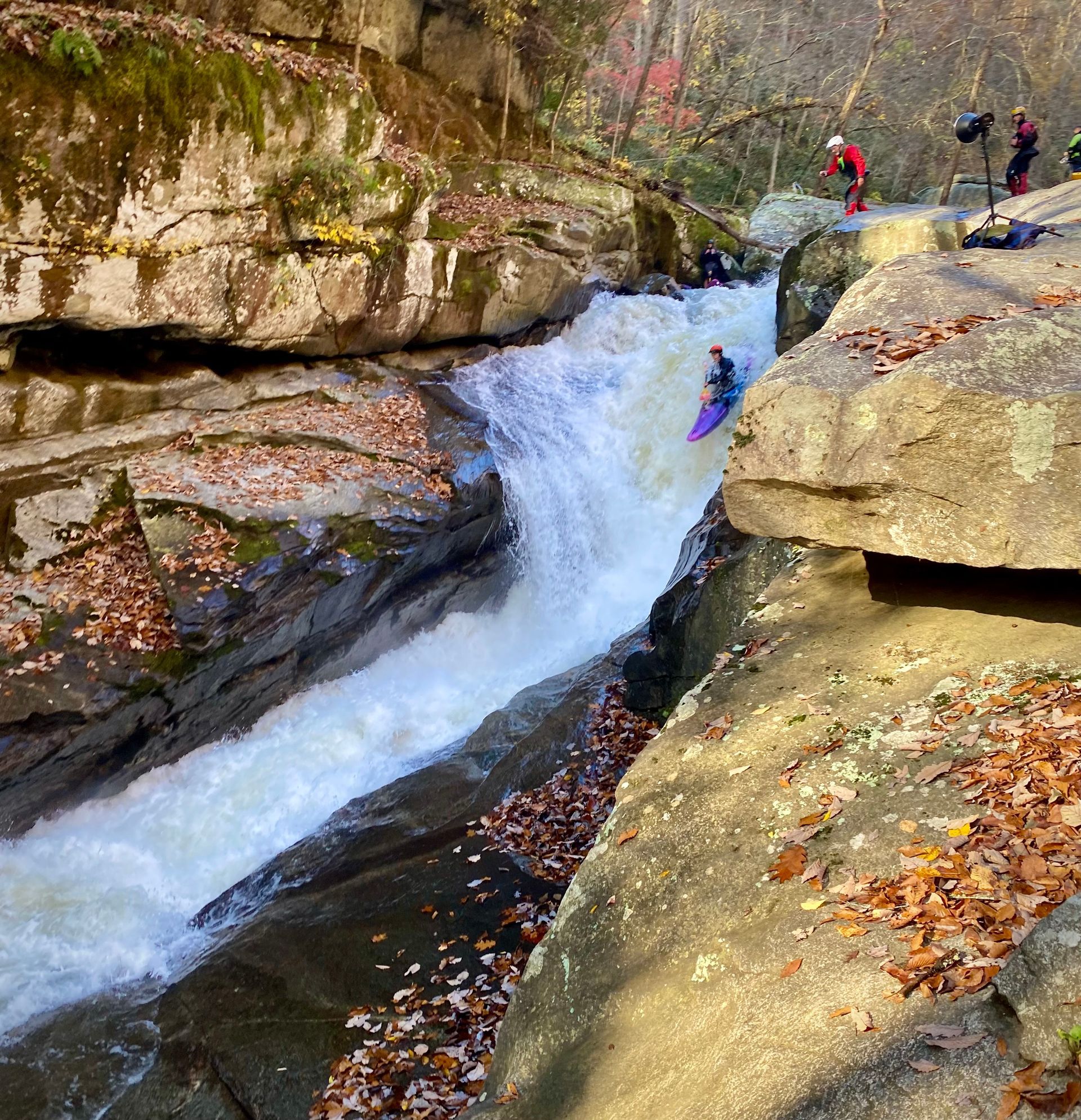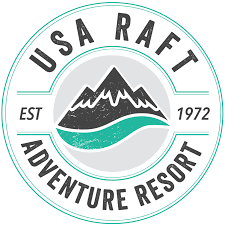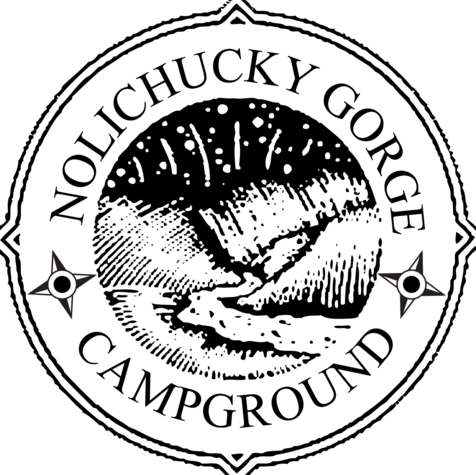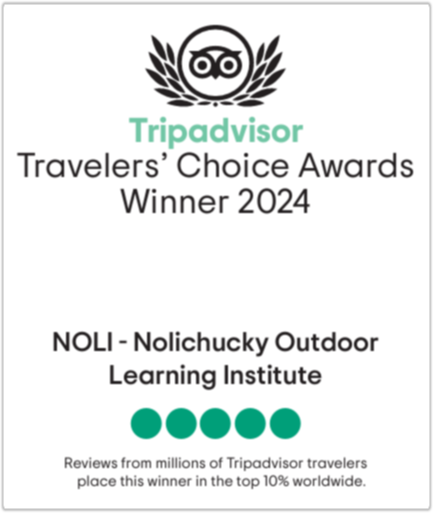Why I Hike.
NOLI instructor Michelle Duffourc shares some thoughts on why hiking and backpacking are so special and how they have shaped her life. There's more to it than you might think.
PeopIe are often curious when they learn I backpack. “I hear it’s pretty there.” “I bet that’s good exercise.” “Isn’t it hard?" "Aren’t you afraid?” “Don’t you ever get bored?” All of these are valid questions whose underlying purpose is to ask … “Why do you hike?” And while the answers to these questions can be pretty straight-forward (incredibly pretty; yes, indeed; sometimes; not really) they are, well, flat, and don’t truly capture the essence of what hiking means to me. The reasons I hike are better summed up as a series of memories, feelings and experiences that have been stamped upon my life and changed it for the better.
- I am climbing on the Appalachian Trail (AT) northbound out of Bradley Gap towards Hump Mountain. While some people may find this climb easy, I am NOT one of them. I hear my heart beating in my ears and my breathing is heavy as I ascend the ~600 feet in the 0.8 mile separating the two points. I look up (UP being the operative word) and see, yes - the fence! That means I’ve already passed the false summits and am near the top. And as I crest the summit, I am surrounded by the grassy bald, the sun warm on my back, the cool breeze blowing in my hair, beneath a dome of cobalt blue sky. Greeting me is the panoramic 360-degree view stretching to Grandfather Mountain, more than 20 miles away to the east. My husband has told me that when he stands in this place of wondrous beauty, the chorus of the song “Hallelujah” from the movie Shrek comes to his mind. I understand why – I am here, in this moment and it is bliss. I hike for the sense of reverence I experience in places which cannot be reached any other way.
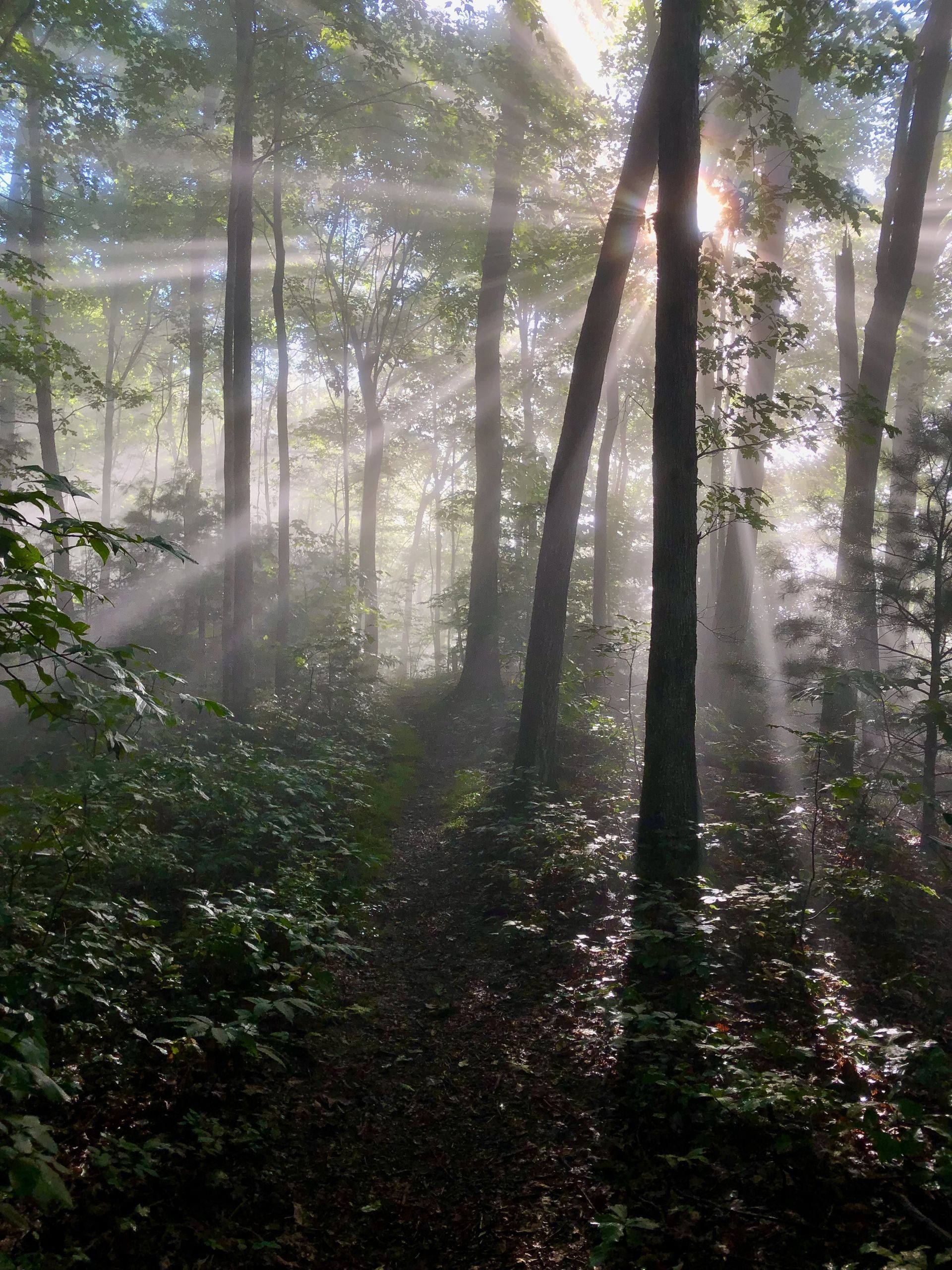
- I am with a small group of students splashing in the pool at the base of Rock Creek Falls. I have taken other groups here and it is always the same reaction. Medical students, PhD students, scientists – serious people with serious jobs. We arrive and people spread out to enjoy the features of this box canyon with a double waterfall hidden in the wilderness. I teach people how to skip stones across the small pool while others wade in to cool off on a hot day. A student calls out “Hey, Dr. Michelle, I see a crawfish!” and we scurry over to watch Mr. Crawfish crawling around the rocks in a deeper part of the pool. We squeal (myself probably the loudest) when Mr. Crawfish darts backward with lightning speed to position himself under a rock, ready to ambush any insect that comes his way. By the time we are ready to head back everyone is grinning from ear-to-ear and I take photos so they can share their memories of a good day. I hike for the child-like sense of joy that comes from playing in nature with good friends.

- I peer out of the opening blasted through the rock face and look upon the raw power that is Mooney Falls. At 200 feet, Mooney Falls is the highest of the waterfalls on Havasu Creek, located within the Havasupai Reservation just west of Grand Canyon National Park. The waters of Mooney plunge over orange cliffs into a pool so blue it doesn’t even seem real. Mist kicked up by the waterfall constantly sprays the rock face, rendering it cold and slippery. There is only one route to the base of this waterfall, and that is to climb down these rocks, clinging to chains and anchors drilled at strategic locations. Rough stairs and footholds have been cut into the surface but it is a near vertical climb of ~150 feet with no safety clips (search “Mooney Falls descent” on YouTube to appreciate). Most of my group have already descended, and only Sally remains with me, waiting patiently with no pressure. Falling is my big fear and I have to decide whether to listen to it, or trust in the training I did in preparation for this hike. I take a deep breath, swing my legs over the ledge and climb down to join the others in exploring the wonderland that is Havasu Canyon. I hike to push beyond the boundaries of my self-imposed limitations.

- My physician looks at my chart: “Hmm, 122/75 – your blood pressure is perfect.” My biometric scale indicates I have above average muscle and bone mass and thus am less likely to develop osteoporosis. At work I notice the water cooler is empty; I remove the empty bottle, grab a full one, and using my legs lift the 5-gallon bottle onto the cooler. It is only when I walk away do I realize that I just lifted 40 lbs with one hand without thinking. Lunch is at a restaurant a mile away; at this time of day it will take 15 minutes to drive there and parking is limited, so I decide to do the easy 2-mile round trip walk. When I first ambled onto a hiking trail 25 years ago I didn’t realize each step was an investment in my future health. I hike not only to improve my current health, but as a gift to my future self and more importantly, to my family.
- The last mile of the Sheltowee Trace National Recreation Trail is nearly flat and I enjoy the lovely stroll as I near my destination. There, up ahead, I see it – Burnt Mill Bridge with a giant banner proclaiming “CONGRATULATIONS END-TO-ENDER!” I begin to cry, because when I started this adventure I didn’t truly believe I had the grit and strength to complete the Hiker Challenge. And here I am, 12 sections and 343 miles later, about to finish. Across Kentucky, and into the Big South Fork of Tennessee, past waterfalls and over rock arches I walked. Through snow, rain, gasping heat and beautiful crystal-clear days to be here, now. But of course, I didn’t accomplish this feat alone. My friend, Minta and niece Julie, AT through-hikers both, embrace me as I cross the line with tears running down my face and welcome me to the sisterhood of female long-distance hikers. My husband, Rob and friend Jess, both of whom supported me through the challenge, are also here to celebrate this life-changing accomplishment. I hug Steve, the Director of the Sheltowee Trace Association, whose hard work makes the Challenge possible. Even on days when I walk by myself, many wonderful people, their kindness and support, are a part of me. I hike to be part of a nurturing community that helps the world be a better place, one trail and hiker at a time.

When I hike, I am thankful for the strength of my body, the beauty of this earth, and the embrace of the community that welcomed me with open arms. In short, I hike because I am grateful for every gift hiking has given me since I first set foot in the mountains I now call home. This summer I plan to hike with blue ghost fireflies, wild ponies and explore more of the Appalachian Trail, among other adventures. Please join me; I’d love to learn why you hike (or want to learn how to hike). Let’s discover a new adventure together.
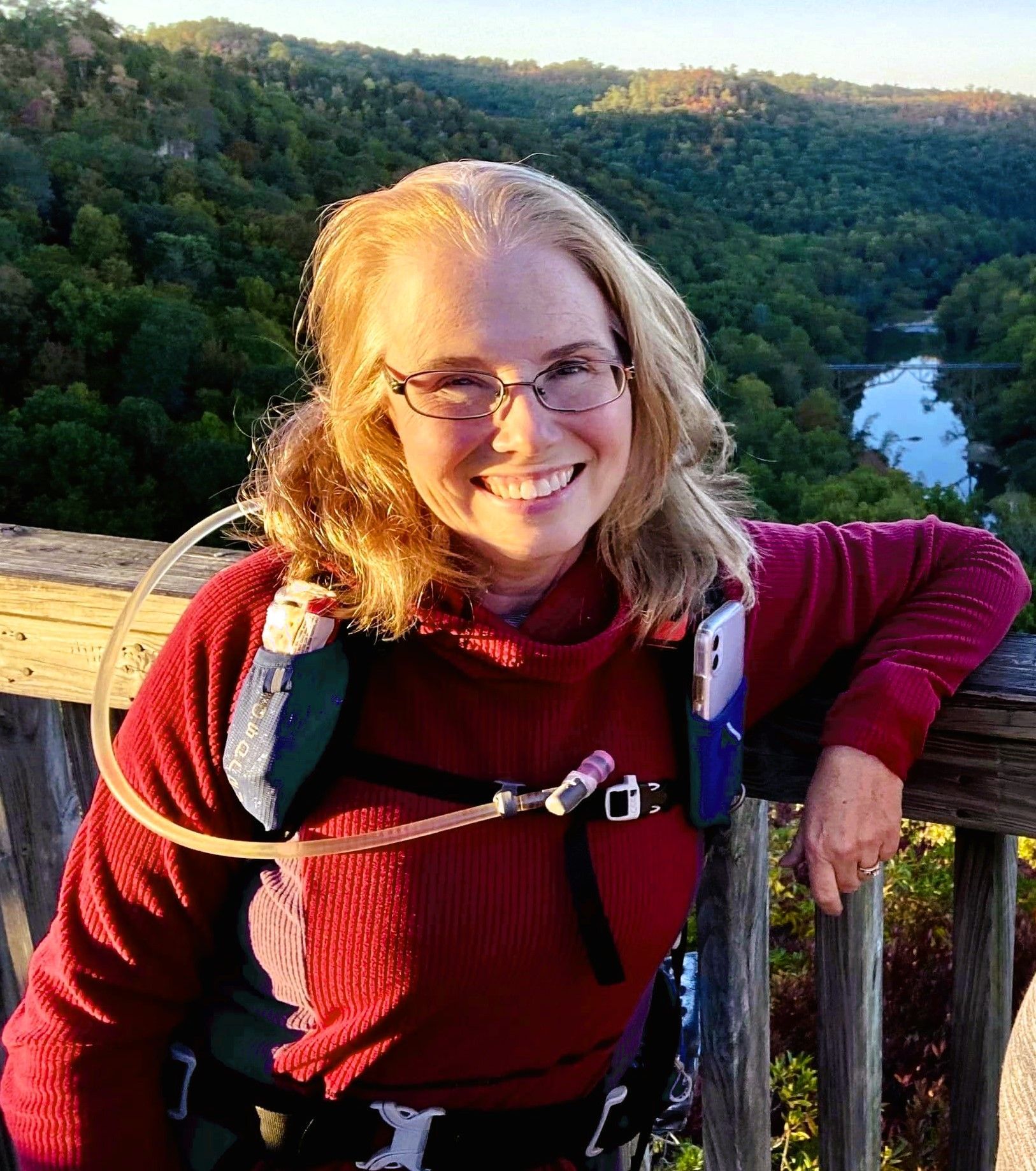
Michelle Duffourc is a backpacking and hiking instructor at the Nolichucky Outdoor Learning Institute (NOLI) in Erwin, Tennessee. To join Michelle for an upcoming Backpacking Overnight Adventure along the Balds of Roan go to https://www.nolilearn.org/activity/backpacking-overnight-adventure--2-days. To see all upcoming classes and events go to https://www.nolilearn.org/backpacking-camping-hiking-classes.

